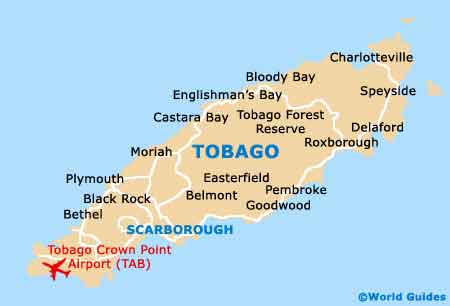Blog
Your Golf Course in an App
- A course overview with detailed hole-by-hole maps, with Google satellite images. You could provide a customised GPS rangefinder for those with GPS-enabled phones. Some apps provide audio descriptions to accompany the hole-by-hole maps
- A tee time booking facility within the app. Discounts and select offers could be provided to those who have downloaded the app.
- An interactive scorecard that keeps score for an individual or group. Players input their handicap and tee they are playing to provide both gross and net scores.
- Clubs can create daily, weekly or monthly leader boards from the individual scores entered in the player’s scorecard. You could even provide the option to create their own leader boards with their playing partners and create their own mini-tournaments.
- As previously mentioned you can provide details of the restaurant menu and reminders during a player’s round. Customers could then book a table via the app or you could provide restaurant contact details.
- An events calendar that would provide the facility for members and guests to book or reserve social and other club activities.
- Other features could include a latest news page, information on the latest weather conditions, and a text message delivery service for news alerts and club promotions that would be delivered to the user even if the app wasn’t running.
GREAT AMERICAN TOUR PLAYER – CRAIG WOOD
COMING SOON TO YOUR TABLET / IPHONE
NO BETTER SPORT THAN GOLF TO REVEAL A PERSON’S CHARACTER
On the 72nd hole of the Farmers Insurance Open at Torrey Pines, Stanley had a 3-stroke lead when he put his third shot on the par-5 into the water. After a penalty and a 3-putt, Stanley found himself in a playoff with hardened veteran Brandt Snedeker, who won on the second playoff hole. The defeat was all the more crushing because Stanley earlier had a 7-stroke lead during the final round.
You might expect Stanley, being a young guy, to take weeks or even months to recover from such an event. Nope. Stanley promptly won the following week at the Waste Management Open in Phoenix by overtaking Spencer Levin, who ironically also held a 7-stroke lead at one point. (At the time of this article, written prior to Levin’s next event, it is unknown how Levin responded.)
What we can say about Stanley is that he reacted very well to his meltdown in San Diego. He could have let it affect him negatively in Phoenix, but he chose to put it behind him and put to use whatever lessons he learned from his previous week’s failure.
Many people say golf is a reflection of a person’s character, because how they operate on the golf course is how they operate off the course. Does a person cheat at golf? Likely he will cheat in business. Does a person throw clubs and curse when things go bad? Likely he will not handle adversity very well off the course. Stanley’s instant comeback was not likely forged over a week’s time. More probable is he has always reacted to adversity in a positive manner.
Golf has also been said to develop character, but more often, it reveals it. You can learn a lot about a person simply by observing how they conduct themselves on the golf course.
From the Teacher’s Desk….
One of the great life lessons may be that everything changes. Golf is no different than life. The days of the skilled custom clubmaker are slowly coming to an end. What once was a thriving sub-industry of the golf equipment business has taken a steady nosedive since 2005.
Although there is still a market for knowledgeable and skilled equipment professionals, the market is becoming very small. The demand today is more for adjusting or altering and reshafting name-brand equipment. Even in the day of very easy and affordable access to custom clubs from the big OEMs, golfers still buy ill-fitted clubs, so there will always some business for the custom shop. A small percentage of clubmakers saw the inevitable, and adjusted quickly enough to satisfy a changing market by offering more services and refined adjustments to equipment to help golfers.
There are several reasons for this gradual transition. One reason would be the industry foresight about consumer demand. Knowing that fitting was becoming more popular, the large equipment manufacturers responded reluctantly by adding custom club departments to their assembly facilities. Turnaround times became a priority, as well as more fitting options. Today, is not unusual to have six or seven shaft options and fitting specs for any OEM iron head and dozens for drivers. Another reason was the advent of the modern day fitting cart. The ability to swiftly switch shaft and head combinations for a better fit was something new for the large OEMs. The custom clubmaker initiated this technology as long ago as 1994, but having the money and name of a major corporation behind the idea proved to be the key factor for advancing this concept.
Golfsmith, the former giant of the custom industry, saw the inevitable coming. They changed CEOs and philosophy several years ago and now have become a massive retailer for the OEMs, their line of custom clubs almost nonexistent. The Golfsmith and Golfworks catalogs now mostly consist of shafts, grips, and supplies. There are still some custom suppliers like Wishon Golf, and there are still some golfers who seek out the personalized touch of the skilled clubmaker. But, the market share shrinks almost monthly, probably to the point of almost being nonexistent in three more years.
A few other reasons contributed to this situation, such as the OEMs having clubs assembled in Asia instead of importing the components and doing the assembly in the US. This has led to the offering of full sets of clubs – both woods and irons – with a golf bag for less than $300. To the trained eye, these are not high-quality clubs by any means, but it is a much less expensive way for someone to get started in the game. This entire market segment used to be satisfied by the custom clubmaker, except at a higher price. But, as we know about other products in our life, it is nearly impossible to compete with cheap labor from Asia. Another reason was the Internet. Mostly unqualified people started to glue together heads and shafts and sell them on eBay for very little markup. Since it was a cyberspace store with virtually no overhead, the key was volume, not quality.
The custom clubmaker has played a key role in the history of golf, going back to the origin of the game. Sadly to some, though, the obituary is beginning to be written today.
US PRO HICKORY CHAMPIONSHIP LATER THIS MONTH
USGTF PROFESSIONALS COMPETE IN TOBAGO
The Value of a Knock-down!
Some people said Kyle choked his guts out, while others said that he just caught a tough break when his wedge shot spun back into the water on 18 because he actually hit a pretty good shot. Pardon me if I’m a little hard on the guy, but honestly, a PGA touring professional needs to have more control over his game if he is to compete at that level with hopes of having any kind of consistent success. Personally, I believe he missed the short put on 18 and then another one in the playoff because of his flustered condition. He knew in the back of his mind that this thing should’ve never gotten into a playoff in the first place.
The value of having a good knock-down shot is absolutely necessary at the PGA Tour level, but it is a true weapon possessed by a small percentage of amateur golfers, especially at the club level. It is quite common, when listening to someone explain how to hit a knock-down on YouTube, to hear them explain some of the basics, but very few of them, if any, actually mention the most important thing that needs to be stressed if the player is truly going to be good enough at it.
If you happen to remember the 1982 US Open played at Pebble Beach, the wind was quite fierce that day, and on #7, the short par-3 that is usually nothing more than a sand wedge, the players were hitting a lot of 7-, 8-, and 9-irons. Since they were hitting more club than usual, they needed to hit more of a knock-down so that they would hit it a little shorter and keep it under the wind as much as possible. The vast majority of them missed the green left. About nine times out of ten, if a player misses the green with a knock-down, he’ll miss it left if he is right-handed. That result is one of the reasons why many people don’t like hitting knock-downs: They always seem to pull-hook it because they don’t quite understand how to execute it properly.
It reminds me of the older fella that was used to using his trusty hand saw to cut his trees down. A friend suggested that he go to Sears and get one of “them thar chainsaws,” because he heard that you could cut twenty trees down with one of those in the time it takes a person to cut down one with a hand saw. So, the old man reluctantly bought a chainsaw, and after a week of trying to cut a tree down and only getting about half way through it, he decided to take the chainsaw back to Sears to get his money back.
He arrived at the store, and after handing the chainsaw back to the clerk, he stated, “This thing is worthless, I want my money back! My hand saw will cut down many more trees than this piece of junk and with less effort!” The confused clerk said, “Let me take a look and see if I can find the problem.” After pulling the rope once, the engine started and the old man quickly hollered “What’s that noise?”
If you’re going to learn how to hit a knock-down, you need to learn how to hit it correctly, or it just becomes another shot that will get you into trouble. The reason that the vast majority of even top-level golf pros tend to pull-hook a knock-down is because they lack synchronization between the hands, arms, and torso when they try to hit it. The lack of synchronization is because they start their arms down too quickly relative to their torso, which causes the arms to make a slight to severe out-to-in path and also causes the hands to flip through impact, which closes the face.
If a knock-down is to be executed consistently, the upper left arm (right handed player) simply has to stay connected to the left pectoral muscle or lat (latissimus dorsi) so that they (arms and torso) are syncronized in their motion. This is why you’ll see virtually every touring pro, when hitting a knock-down, having his upper left arm still connected to his chest as he finishes his abbreviated finish while his right arm is almost fully extended.
If Kyle had played more of a knock-down, he could have made the ball check on the second or third bounce and then just relied on the natural slope to feed the ball back to the hole. A knock-down’s lower angle of attack coming into the green helps to kill excessive spin and is much more predictable. Remember: The key is to keep the moving parts synchronized so that their paths relative to each other are complementary, not adversarial.
THREE RULES I WOULD DEFINITELY CHANGE IF I WERE IN CHARGE
The rules of golf allow loose impediments to be removed from one’s line of play or around the golf ball. Size of the impediment should not matter. A grain of sand should not be considered any differently than a stick, pebble, or boulder. Here’s another rub. You can wipe sand from your line of putt if you are on the green, but not if it is in your line just off the green. Crazy.
The other two rules I would change involve divots and spike marks. Nothing is more aggravating than hitting a ball right down the middle and then finding your ball sitting in the middle of a divot hole. If it were a hole made by an animal, it would be a free lift. I guess human holes are not as bad as animal holes. One could argue that divots are a part of the game and landing in one is just rub of the green. You don’t get to move your ball out of a footprint in a sand trap. That is true; however, sand can be raked and the surface put back in perfect condition after a person plays. Only the vilest of human beings don’t rake after themselves. A divot cannot be repaired as easily, and it does not seem right that you have to play from a spot where the previous player had a good lie.
Lastly, spike marks. How can anyone justify that it is okay to repair a ball mark in your putting line but not a mark made by a footprint? There is no logic that I can think of to explain one versus the other. I suppose one could say that you have to fix ball marks because they damage the surface and not to repair them would ruin the putting surface. Okay, so repair them after you putt, just like you repair spike marks after you putt. However, in my rule book, golfers could repair both before striking the ball.
So, those are three rules I would change. We need rules (otherwise, as Cosmo Kramer would say, there would be chaos), but illogical rules should be eliminated. Just one man’s opinion.




